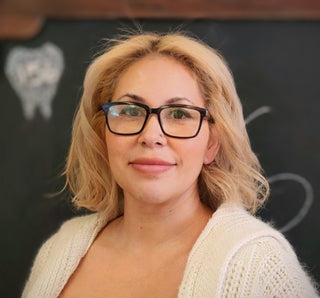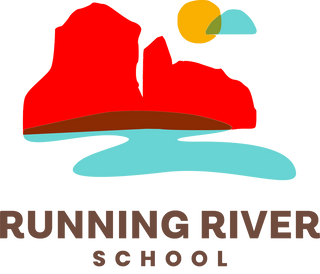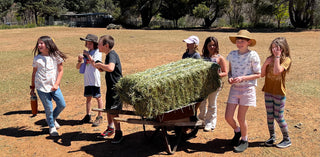Curriculum Overview
- Theme: Old Testament Stories
- Calculate with time, money, measurement; continued practice with the four arithmetical processes and the multiplication tables
- Reading, composition and grammar, basic sentence structure, cursive writing, spelling/vocabulary, group/partner/independent reading
- Painting/drawing
- Music, flute, singing
- Farming/gardening/cooking
- Spanish
- Class Play
Life Skills
- Demonstrate increasing awareness of group needs and contribute to the
class well-being: take turns, speak/listen, support others, classroom chores - Participate in both individual and collaborative work
- Resolve conflicts with respect and self-control
Detailed Curriculum
The third grade is often called the turning point of childhood. The eight or nine-year-old child is going through a change that is particularly profound, where they begin to feel themselves growing apart from the world. The 8/9-year old will also begin to challenge the limits of authority and attempt to take more responsibility for themselves. The child starts to ask deeper questions about this new world (and new part of themselves) they are just beginning to experience, such as, "Who am I?," “Where did I come from?” or “Are you really my parents?” They begin to experience themselves as an individual part of the world, not an extension of their parents. Never before have they felt so separate from their environment, friends, parents, and other people. Understandably, during this change, they can become sad, cynical, and lonely, feeling this new separation very keenly.
The third grade curriculum is designed to empower the child! To meet this growing awareness of self-sufficiency with strength and ability, children are challenged to build practical skills. These skills help the child reconnect to the world and life in a new-found way. Practical skills of farming or gardening, cooking, home building, and measurement, in addition to their academic pursuits, are focal points of the third grade year.
Language Arts
- Writing
- Reading
- Spelling
- Grammar
- Punctuation
- Speech Formation
- Dramatics
Creation stories from different cultures and stories from the Old Testament provide engaging narratives that speak to the internal life and external struggles of the nine-year-old child. Cursive writing is practiced, parts of speech are analyzed and spelling receives much attention.
Mathematics
- All Four Operations (addition, subtraction, division, multiplication)
- Geometric Movement
- Building and Measurement
Arithmetic becomes practical, applied to real life situations such as measuring, weighing, cooking and money. The children continue to practice the four arithmetic operations and work with the higher multiplication tables. They also do more advanced work with carrying and borrowing, charts, data collection and problem solving.
Natural Sciences
- Nature Study
- Gardening
- Farming
- Cooking
At this time when the children feel themselves becoming separate individuals from the world around them, farming and gardening not only provide a practical foundation for scientific exploration, but draw the children back into working as a community on realistic projects that bring them closer to the earth.
Social Sciences and Pre-History
- Hebrew Scriptures
- Old Testament Stories
- Study of Practical life
- Pioneer Life
In the ninth-year transition from dreamy awareness to awakening realism, social studies are introduced and children learn how the kingdoms of nature mutually support and complete one another. They visit a farm for a concrete experience of the dependence of man on plants and animals and they study shelter and house building, contrasting their homes with those of other times, peoples and climates.
Fine Arts
- Watercolor Painting
- Form and Freehand Drawing
- Modeling (Clay)
- Drama (Class Play)
The importance of the fine arts in a well-rounded education is described in detail in this great article, "Drawing with Hand, Head and Heart: Beyond the Right Side of the Brain"
Handwork
- Knitting
- Hand Sewing
- Crochet
Handwork plays an important function in helping to develop the will of the child, in fostering self-esteem and an appreciation for beauty. It also plays a critical part in helping to establish and activate pathways in the brain that link the left and right side of the brain and also act as a general network in each hemisphere. To support fine motor skills and assist in mathematical learning, knitting, crocheting and sewing are exceptional tools that support quiet study and concentration. The hands are the primary instrument that growing children use to inform themselves about the world in which they live. What the hand feels the brain knows.
Music
- C Flute
- Singing
Songs, rhythm activities and the further study of the flute are all a part of the elementary years. The children learn to play their flutes by ear, carefully listening and watching their teachers, and growing accustomed to the sound of music, which supports their capacity for concentration. In the 4th grade, students, in some schools, are introduced to stringed instruments.
Physical Education
- Cooperative Games
- Nature Walks/Hikes
- Nature-Based & Curriculum-Related Field Trips
- Recess/Free Play
Physical activity is a key component in Waldorf education. Seen as a necessity for all children, movement throughout the day supports learning and physical development.

Third Grade Teacher
Leah Friedman
Ms. Leah's background is in holisitc healthcare and Waldorf early childhood education. She is excited to be moving into the grades and endeavors to support and encourage the inner life of the child by fostering a sense of love, warmth, comfort, wonder, and accomplishment in her classroom.
Admissions Inquiry
Running River School uses an open enrollment model whereby a student may enroll at any point in the year (up through April 15). Please inquire about openings or to be placed on a waitlist.

